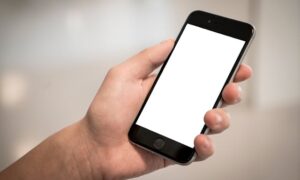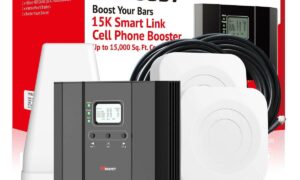If you’re at home and your cell phone isn’t getting a good signal, you can take several steps to improve its quality. The easiest way is to purchase a cell phone signal booster for home, but you have ten other complimentary ideas to try. These fixes can help you get the most out of your cell phone.
1. Move to an open window.
Your cell phone needs to communicate with the nearest cell phone tower. Since these are outside, you can move to an open window to get better reception from the tower. Walls, furniture, and other household items can interfere with the signals, so you’ll want to reduce the items between you and the tower.
You can’t do anything about trees, mountains, nearby buildings, and the weather, but you can move around to get better service. Pick a window that has a clear view rather than one blocked by trees, fences, or next-door buildings. You’ll get the best service if nothing interferes with the signals.
2. Keep the battery charged.
When your cell phone tries to connect with the tower, it uses battery power. If your battery gets low, it struggles to connect. Keep your phone charged so it has the juice it needs to connect and improve your connection. Reduce your cell phone brightness and close unused apps. Update your phone’s software and turn off push notifications.
Bluetooth will also quickly drain your battery, so only turn it on when you need it. If you’re on the road frequently, invest in a portable phone charger so you always have enough juice to access a signal.
3. Know where the nearest tower is.
Knowing where the nearest tower is will help you find the best place in your home for service. If the nearest tower is closest to the southern side of your home, you’ll get better service on the south side of your home. Your service will be poorer on the north side, because the signal has to move through several walls.
You can find the nearest cell tower using your smartphone or using a website. The websites will ask for your zip code, then they will show you where the nearest towers are. You can check your signal strength on your cell phone to see if you are getting close to the maximum strength. The quickest way to determine your cell strength is by looking at the bars on your phone – if you have five, then you have a strong signal.
4. Use your home Wi-Fi.
Many Wi-Fi providers offer Wi-Fi calling that lets you use your broadband internet on your phone. You won’t have to worry about cell phone towers and 5Gs, as your Wi-Fi takes care of the service for you. Wi-Fi calling options will depend on your phone and your carrier, and you’ll most likely need to have an iPhone or a model by LG or Samsung. Check the settings in your phone and look for “Wi-Fi calling,” then turn it on.
5. Get to know Femtocells.
Femtocells are little devices that provide cell signals and broadband service. Service providers offer Femtocells for an additional fee, but you’ll never have to worry about cell phone service if you pay for this service. These devices work like network extenders or personal hotspots, but they are designed for cell service. Most cost around $300 or more, and they require their own broadband service. Most major carriers sell them.
6. Don’t let the antennae become blocked.
Even though you can’t see it, your cell phone has an antenna. Find out where it is on your phone and do not block it with your hand or a case so it can get the best service.
Gone are the days when cell phones had exterior antennas, so now most people have no idea where the actual antenna is. Sometimes, the antenna is the rim on the side of the phone, while other phones have antennas inside. Unfortunately, some manufacturers do not consider how people hold their phones when they choose the antenna’s location.
The best way to hold your phone upright so the antenna can send and receive signals. If you still don’t get service, hold the bottom of the phone with your fingertips – pretend you’re holding it like a tray. This will prevent you from grabbing the phone tightly and blocking the signals.
If this doesn’t work, you can also turn on the speaker and place the phone on your table. Many people find that hands-free phone calls are the easiest because they get better service and they don’t worry about accidentally hanging up.
7. Go into a space by yourself.
If you’re in a busy part of the house where everyone is using their phone, your service could be affected. Move to a place where you are alone to improve the signal strength. Cell towers send a limited signal, so a crowded area can quickly use up anything that is available. If you find yourself unable to get a signal around a group of people, go somewhere without a bunch of people and their devices.
8. Try adjusting a few apps.
Some apps will affect the signal strength. Play around with airplane mode, and check that your cell data is on. You might need to update your phone or remove some apps that take up too much space. Check that your cell data is on and double check your calendar and time. Sometimes you’ll find success by removing and re-inserting the SIM card.
9. Restart your phone
When in doubt, restart your phone. You’ll be amazed at how often this simple trick works. If your phone still doesn’t work after a restart, turn on airplane mode for about 30 seconds, then turn it off.
10. Get a cell phone booster.
Cell phone boosters are small devices you plug into an outlet to boost your cell service and broadband service. They are inexpensive, so you can add several of them around your home. These little devices amplify the limited signal so you can make calls and use your phone.



































